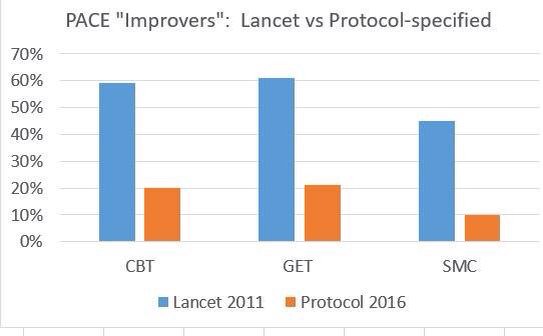Has anyone noticed that in the Lancet paper the percent improved uses the the number of survey responses at 52 weeks as the denominator in the percent calculation while in the latest offering they use the number randomised. I'm no statistician so I don't know which is more correct but the Lancet numbers are inflated by a few percent compared to using number randomised.
I had noticed that. In their new analysis they are applying a regression analysis to do something which I assume is to deal with bias in different centers but it could also be used to fill in missing data in which case the numbers they are using would be correct.
I have issues with not putting the equations used and the lack of clarity on what they are doing but I guess this reflects state of the art?

